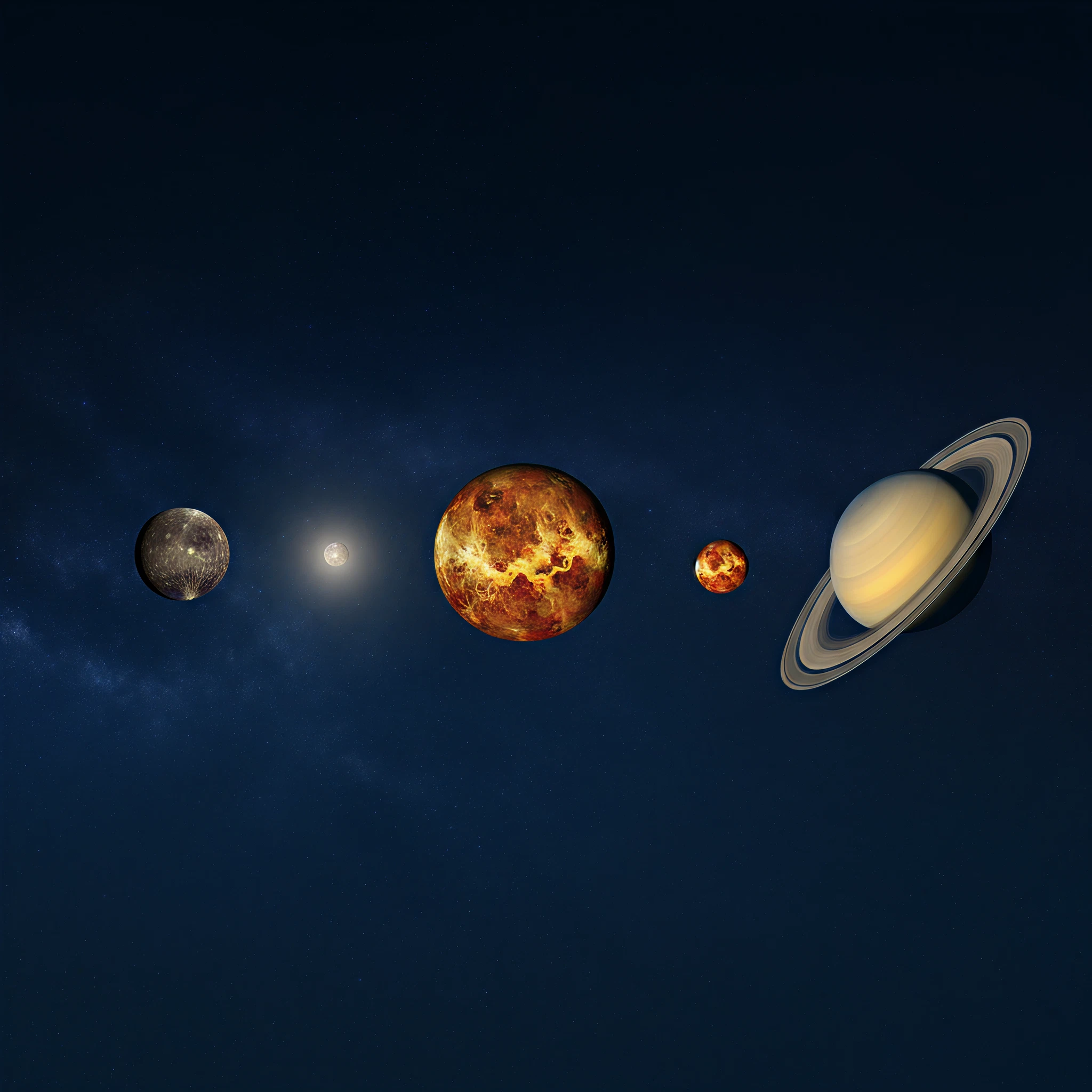If you’re an avid stargazer or simply someone curious about the wonders of the cosmos, get ready for a celestial treat! Mercury, Venus, and Saturn are aligning in a stunning “planet parade,” setting the pre-dawn sky ablaze with their brilliance. This rare planetary alignment is a must-see event, and we’ve got all the details so you don’t miss it.
What is a Planet Parade?
A planet parade occurs when multiple planets align in the sky, making them visible together from Earth. This stunning phenomenon offers an incredible opportunity to observe several of our solar system’s planetary neighbors in one grand display.
When and Where to Watch
Mark your calendars! The best time to view this planet parade is approximately 45 minutes before sunrise on April 24th and 25th. Look towards the eastern sky, just above the horizon, where the planets will appear near a glowing crescent moon. Here’s what to expect:
- Venus and Saturn will be the easiest to spot, shining brightly in the sky.
- Mercury, while dimmer, will hang low on the horizon. A clear, unobstructed view is recommended to catch this elusive planet.
Set your alarm clocks early and find a dark, open area to fully enjoy the spectacle!
Why This Planet Parade Stands Out
This alignment is one of several planet parades happening this year, but each brings its unique charm. Coming shortly after February’s seven-planet alignment, this event adds a touch of simplicity and elegance, showcasing just three celestial bodies and the moon. The sight of these planets shining together is nothing short of breathtaking.
And don’t worry if you miss it. Another alignment featuring Mercury, Venus, Jupiter, and Saturn is expected in August.
Bonus Night Sky Attractions in April
The planet parade isn’t the only cosmic event to thrill stargazers this month. April’s night sky offers even more celestial wonders:
- Lyrid Meteor Shower: Known for its fast-moving shooting stars and occasional fireballs, this annual shower will peak around April 21–22. The dark skies of the new moon provide perfect conditions for meteor watching.
- Messier 3 Globular Cluster: One of the oldest known celestial formations, Messier 3 is a dazzling stellar cluster located about 34,000 light-years away. Look for it in the northern sky, between the bright stars Arcturus and Cor Caroli. While visible through binoculars, a telescope will reveal its full, awe-inspiring detail.
Tips for Stargazing
Whether you’re a seasoned astronomer or a beginner with a pair of binoculars, here are some tips to maximize your planet parade experience:
- Plan Ahead: Check your local sunrise time and aim to observe the sky 45 minutes before.
- Find a Dark Spot: Get away from city lights to reduce light pollution.
- Bring Binoculars or a Telescope: While Venus and Saturn are bright enough for the naked eye, a small telescope or binoculars can enhance visibility, especially for Mercury.
- Consult a Sky Chart: Use a reliable star chart or astronomy app to locate the planets and other celestial objects.
The Beauty of the Cosmos
This celestial alignment reminds us of the grandeur of the universe. Mercury, Venus, and Saturn’s glow in the company of the moon is a humbling sight, offering a moment to reflect on our place in the cosmos.
Whether you’re catching this event from a park, your backyard, or a remote location, take a moment to enjoy the magic of the universe unfolding above you.
Don’t forget to share your planet parade photos and experiences with fellow stargazers or astronomy enthusiasts online!








